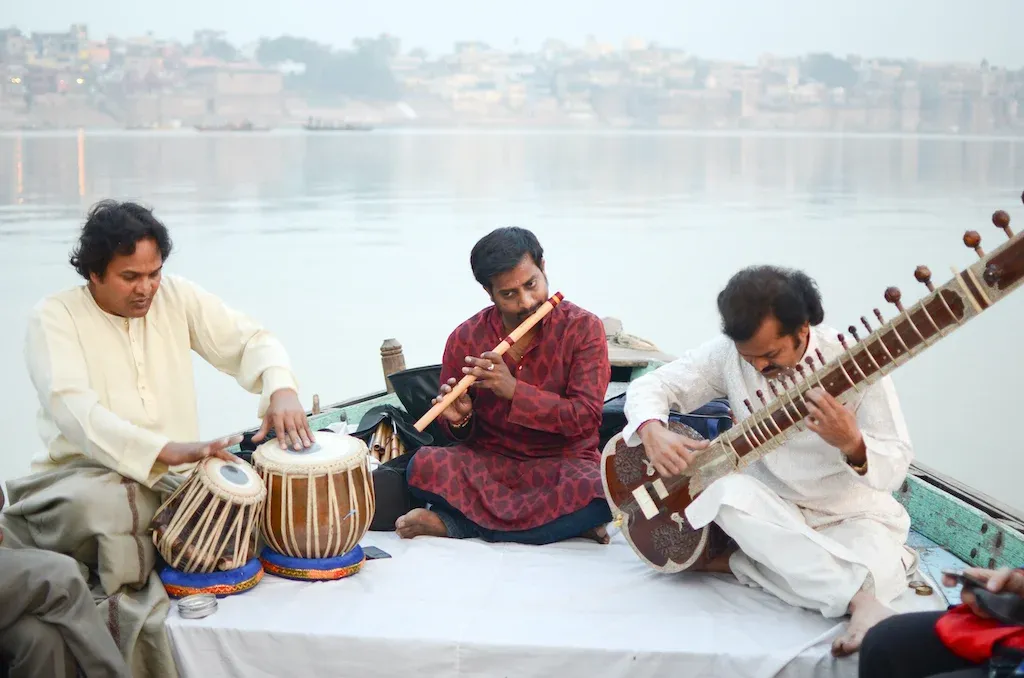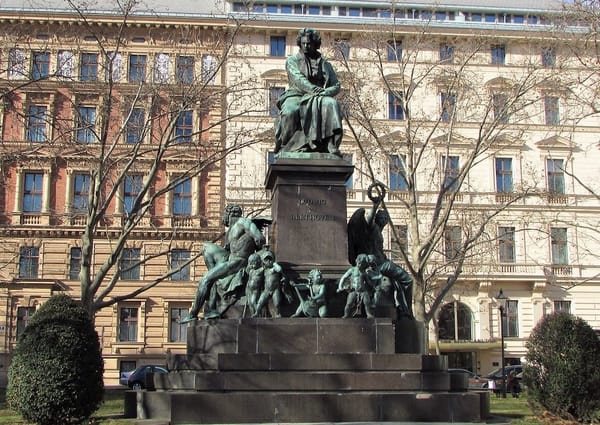Differences and Similarities Between North and South Indian Traditions

Indian classical music, a vast and intricate field, is primarily divided into two major traditions: Hindustani classical music, which is prevalent in the northern regions of India, and Carnatic classical music, which is predominant in the southern states. Both traditions share a common origin and certain foundational principles, yet they have evolved distinct characteristics over centuries. This article explores the key differences and similarities between these two rich musical traditions.
Historical Background and Evolution
Common Origins
Both Hindustani and Carnatic music trace their roots to the ancient Vedic period, where the Sama Veda played a crucial role in the development of early Indian music. These hymns, sung in specific melodic patterns, laid the foundation for the later development of raga (melodic frameworks) and tala (rhythmic cycles).
Divergence
The divergence between the two traditions began around the 13th century, influenced by historical and cultural factors. The northern regions of India experienced significant Persian, Afghan, and Mughal influences due to invasions and the establishment of Muslim rule. These interactions brought new musical elements and instruments into the fold, leading to the distinct evolution of Hindustani classical music.
In contrast, the southern part of India, largely insulated from these invasions, retained a more orthodox approach to its musical heritage. Carnatic music continued to evolve within the framework of Hindu temples and courts, maintaining a purer form of ancient traditions.
Core Elements: Raga and Tala
Raga
Both Hindustani and Carnatic music are built upon the concept of raga, a melodic framework that guides the creation and performance of music.
- Hindustani Ragas: In Hindustani music, ragas are more fluid and allow for extensive improvisation. The performance of a raga in Hindustani music typically begins with an alap (a slow, free-tempo introduction), followed by more structured sections like jod and jhala, and culminating in a composition with rhythm (gat or bandish). The mood and time of day are crucial aspects, with specific ragas assigned to different times and seasons.
- Carnatic Ragas: Carnatic ragas are more rigidly structured, with specific rules regarding their performance. The compositions (krithis) in Carnatic music are often pre-composed and serve as the basis for improvisation. Unlike Hindustani music, Carnatic music places less emphasis on the time-of-day concept for ragas, though some traditional associations still exist.
Tala
Tala, the rhythmic framework, is another critical component shared by both traditions.
- Hindustani Talas: In Hindustani music, talas are cyclic patterns of beats, with commonly used talas including Teentaal (16 beats), Ektaal (12 beats), and Jhaptaal (10 beats). The tabla, a pair of hand-played drums, is the principal percussion instrument, providing intricate rhythmic accompaniment.
- Carnatic Talas: Carnatic music also uses cyclic patterns of beats but with a different system of classification. Some of the commonly used talas are Adi tala (8 beats), Rupaka tala (6 beats), and Misra Chapu (7 beats). The mridangam, a double-headed drum, is the main percussion instrument, with other instruments like the ghatam (clay pot) and kanjira (frame drum) adding to the rhythmic texture.
Forms and Genres
Vocal Forms
- Hindustani Vocal Forms:
-
- Dhrupad: The oldest form, characterized by its meditative and austere style.
- Khyal: The most popular form, known for its flexibility and improvisational nature.
- Thumri: A semi-classical form focusing on romantic and devotional themes.
- Tappa: Known for its rapid and intricate rhythmic patterns.
- Carnatic Vocal Forms:
-
- Kriti: The most prominent form, composed by great composers like Tyagaraja, Muthuswami Dikshitar, and Syama Sastri.
- Varnam: Typically used as a warm-up piece, known for its complex structure and speed.
- Padam: Devotional or romantic compositions that are slower and more expressive.
- Javalis: Similar to Padams but lighter and more playful in nature.
Instrumental Forms
- Hindustani Instruments:
-
- Sitar: A plucked string instrument with a rich tonal quality.
- Sarod: A fretless string instrument known for its deep, resonant sound.
- Tabla: The principal percussion instrument.
- Bansuri: A bamboo flute with a warm, melodious tone.
- Santur: A hammered dulcimer with a delicate, shimmering sound.
- Carnatic Instruments:
-
- Veena: A plucked string instrument with a distinctive, resonant sound.
- Violin: Adapted from Western classical music but played in a sitting posture.
- Mridangam: The principal percussion instrument.
- Flute: Similar to the bansuri but with a different fingering technique.
- Nadaswaram: A double-reed wind instrument often played at temple festivals.
Performance Style and Presentation
Hindustani Performance
Hindustani classical music performances are characterized by their improvisational nature and the gradual unfolding of a raga. The performance typically begins with a slow, meditative alap, where the artist explores the raga’s melodic possibilities. This is followed by more rhythmic and structured sections, leading to a climactic finish. The interaction between the main artist and the tabla player is a dynamic and integral part of the performance.
Carnatic Performance
Carnatic music performances are more structured, with a pre-planned sequence of compositions. The performance often begins with a varnam, followed by a series of kritis, each featuring improvisational sections like alapana (melodic improvisation), neraval (improvisation on a line of the kriti), and swarakalpana (improvisation using solfege). The mridangam player plays a crucial role, providing rhythmic support and engaging in complex rhythmic exchanges with the main artist.
Improvisation
Improvisation is a key aspect of both traditions, though it manifests differently.
- Hindustani Improvisation: Emphasizes free-flowing, spontaneous creation within the framework of the raga. Artists have significant freedom to explore and innovate, making each performance unique.
- Carnatic Improvisation: While also significant, it tends to be more structured. Improvisational sections are built into the performance of compositions, and there are specific forms of improvisation like ragam-tanam-pallavi that are integral to a Carnatic concert.
Theoretical Foundations
Both traditions are underpinned by extensive theoretical frameworks, but they differ in terminology and conceptualization.
- Hindustani Theory: Rooted in ancient texts like the Natya Shastra and later works like the Sangeet Ratnakar. The theory includes concepts like swara (notes), raga, tala, and the intricate relationships between them.
- Carnatic Theory: Also rooted in ancient texts, with significant contributions from later scholars like Venkatamakhin. The theory includes the melakarta system (a system of 72 parent scales) that provides a comprehensive framework for classifying ragas.
Training and Transmission
Both traditions follow the guru-shishya parampara (teacher-student tradition), emphasizing personal, immersive learning.
- Hindustani Training: Often involves living with the guru and learning through direct transmission of knowledge and style. This method fosters a deep, personal bond and a holistic understanding of the music.
- Carnatic Training: Similarly involves close interaction with the guru, though modern institutions also play a significant role. Students learn through rigorous practice, repetition, and the study of compositions.
Cultural and Social Context
Hindustani Music
Hindustani classical music has historically been associated with royal courts, temples, and the aristocracy. It has also been influenced by Sufi and Bhakti movements, leading to the creation of devotional music forms like Qawwali and Bhajans. In contemporary times, it enjoys patronage from various cultural organizations and a global audience.
Carnatic Music
Carnatic music has deep roots in the temple culture of South India, with a strong emphasis on devotional themes. It is closely linked to Hindu religious practices and festivals. The tradition of Tyagaraja Aradhana, a festival dedicated to the composer Tyagaraja, is a prominent example. Carnatic music also has a significant presence in the global diaspora, with vibrant communities in countries like the United States, Canada, and Australia.
Conclusion
Hindustani and Carnatic classical music, while sharing a common origin, have evolved into distinct traditions with their own unique characteristics. Hindustani music, with its emphasis on improvisation and fluidity, and Carnatic music, with its structured compositions and intricate rhythms, both offer deep and rich musical experiences. Despite their differences, they are united by a profound dedication to the art of music, a shared theoretical foundation, and a commitment to preserving and evolving their respective traditions. As both continue to inspire and influence musicians and audiences worldwide, they remain vital and dynamic parts of India’s cultural heritage.





